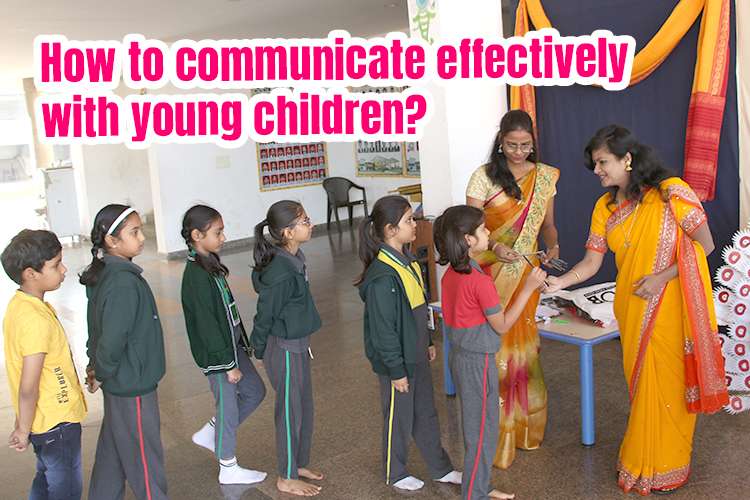A specific communication approach that takes into account the developmental stage and communicative abilities of young children is required for effective communication. Learn about the precise strategies and techniques that help you as a parent to communicate more effectively with young kids.
Why does effective communication matter?
Effective communication is essential for fostering healthy relationships, supporting a child’s emotional development, and promoting their overall well-being. It enables children to express their needs, emotions, and thoughts while also helping them understand and follow instructions. Additionally, strong interaction skills lay the foundation for academic success and future social interactions.
What is the importance of age-appropriate communication?
Tailoring your communication style to match the developmental stage of young children is crucial. Different age groups have varying comprehension levels, vocabulary sizes, and cognitive abilities. By understanding these differences, you can adjust your approach to ensure clarity, engagement, and appropriateness for the child’s age.
What are the developmental stages in children?
As they grow and mature, children go through numerous developmental phases. Specific changes in their physical, cognitive, emotional, and social aspects of development are characteristics of these phases. Developmental stages are mentioned below:
1. Infants (0-12 months)
During the first year of life, infants rely heavily on nonverbal interaction. They respond to facial expressions, tone of voice, and touch. Creating a strong bond can be achieved through gentle tones, smiling, and maintaining eye contact. Responding promptly to their cries and gestures conveys care and builds trust.
2. Toddlers (1-3 years)
Toddlers begin to develop their language skills and engage in simple conversations. However, their vocabulary is still limited, and they may rely on gestures and pointing to express themselves. Using simple and concrete language, accompanied by visual cues, aids their understanding. Offering choices empowers them and encourages participation.
3. Preschoolers (3-5 years)
Preschoolers have an expanding vocabulary and are more proficient in expressing their thoughts and feelings. Engaging them in conversations about their experiences and encouraging curiosity fosters language development. Asking open-ended questions and actively listening to their responses helps them feel valued and encourages their interaction skills to flourish.
What are the strategies for effective communication?
By incorporating these strategies into daily interaction practices, people may overcome challenges, form lasting relationships, and act confidently and competently in a range of social circumstances. Think about the boosting interaction techniques listed below:
1. Active listening
Active listening is a fundamental skill that enhances communication with young children. Give your full attention, maintain eye contact, and respond appropriately. When children feel heard, they are more likely to express themselves openly and trust that their thoughts and feelings are valued.
2. Use simple and clear language
To ensure comprehension, it is important to use age-appropriate language and avoid complex terms or jargon. Simplify your sentences, break down instructions into smaller steps, and provide visual aids or gestures to reinforce understanding. Create a supportive environment where children can easily grasp concepts.
3. Provide positive reinforcement
Positive reinforcement plays a vital role in motivating children to communicate effectively. Praise their efforts, acknowledge their achievements, and provide specific feedback. By focusing on their strengths and encouraging progress, you boost their self-confidence and create a positive association with communication.
4. Non-verbal communication
Nonverbal cues, such as facial expressions, gestures, and body language, significantly impact communication. Pay attention to your own nonverbal cues and ensure they align with your verbal messages. Encourage children to express themselves nonverbally as well, allowing them to use creative outlets like drawing, acting, or play to communicate their thoughts and emotions.
How should parents handle tantrums during communication?
Tantrums are a normal part of a child’s development and may occur during conversations. Knowing how to handle tantrums effectively can contribute to smoother and more productive interactions. Here are some guidance points on managing tantrums during communication:
1. Stay calm and composed
When faced with a tantrum, it’s crucial to remain calm and composed. Losing your temper or responding with frustration can escalate the situation further. Take deep breaths, maintain a gentle tone of voice, and approach the tantrum with patience and understanding.
2. Validate your child’s emotions
Tantrums often stem from strong emotions like frustration, anger, or sadness. Show empathy and let your child know that you understand their feelings. Use phrases like “I can see you’re upset” or “I understand that you’re feeling angry.” Validating their emotions helps them feel heard and acknowledged.
3. Provide a safe space
During a tantrum, create a safe space for your child to express their emotions. Avoid restricting their movements or confining them to a specific area. Instead, ensure that the environment is free from potential hazards and allow them to express themselves freely while staying within reasonable boundaries.
4. Offer reassurance and comfort
Reassure your child that you are there for them and will support them through their emotions. Use comforting words and gentle physical touch, such as hugs or a reassuring pat on the back. Let them know that it’s okay to feel upset and that you are there to help them navigate their emotions.
5. Use simple and clear communication
When communicating with a child in the midst of a tantrum, it’s essential to use simple and clear language. Keep your sentences short and straightforward to ensure understanding. Avoid lecturing, criticising, or reasoning with them until they have calmed down. Instead, focus on providing comfort and reassurance.
For successful conversations with young children, tolerance, comprehension, and flexibility are required. You can encourage excellent conversation skills and promote overall growth by adapting your approach to their developmental stage, paying great attention to their requirements, using simple language, and utilising nonverbal signs. Remember that children utilise efficient communication as a strong tool to express themselves, form relationships, and succeed in various areas of their lives.
Effective communication with young children involves understanding their developmental stages, using age-appropriate language, active listening, positive reinforcement, and nonverbal communication. By incorporating these strategies and techniques, you can build strong connections, foster emotional development, and support children’s overall well-being.




